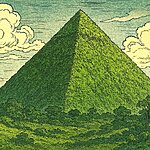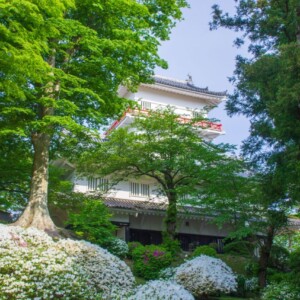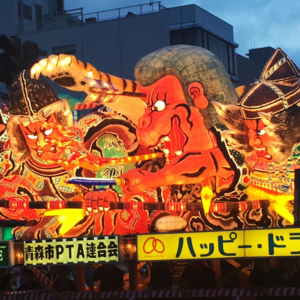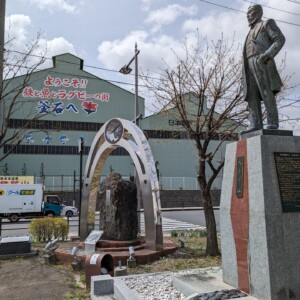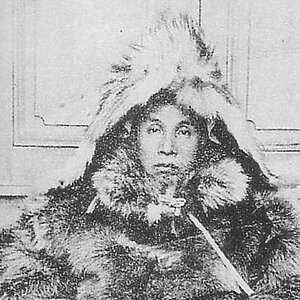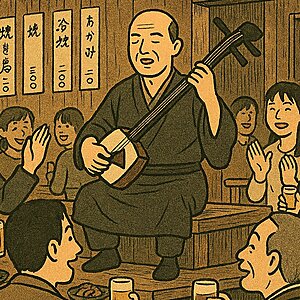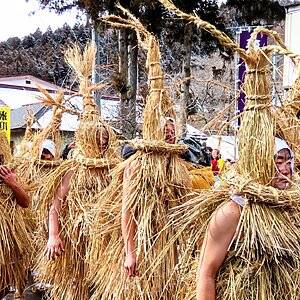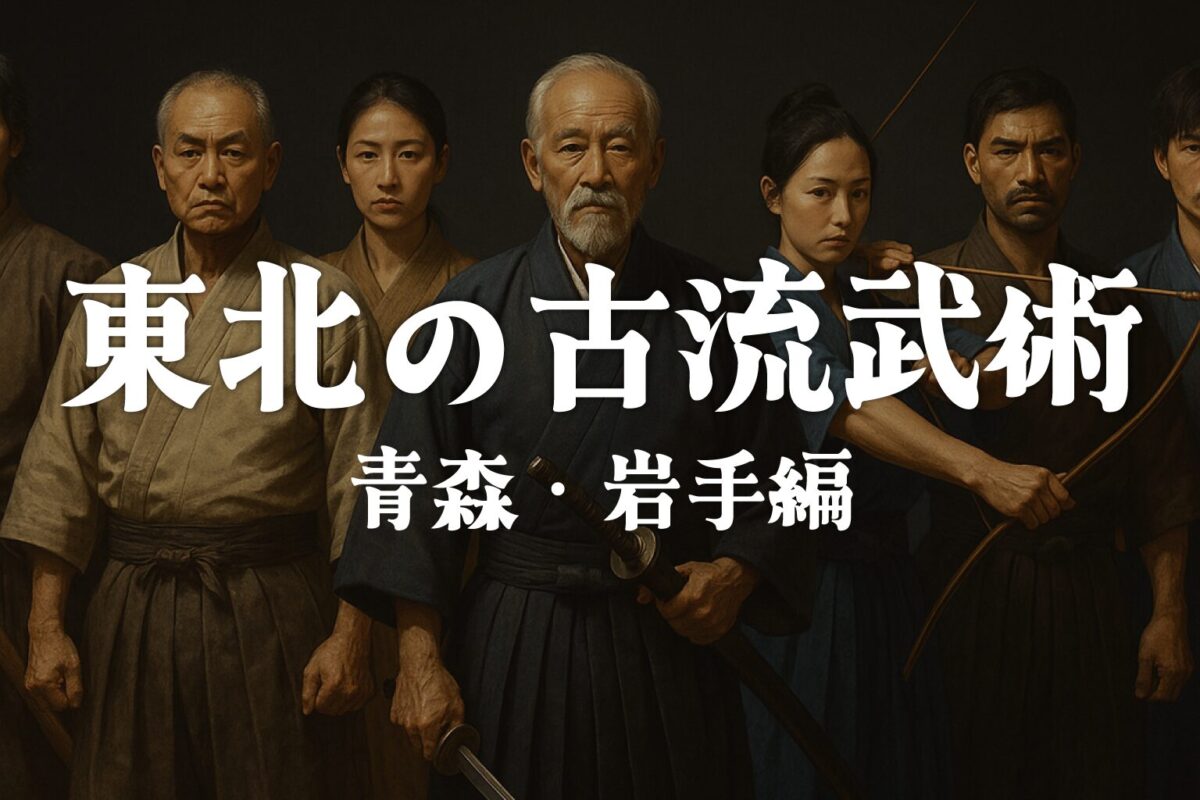
[Aomori and Iwate Edition] Valuable ancient martial arts from the six Tohoku prefectures! What are the unique techniques still handed down today?
table of contents
It is self-evident that the samurai's primary duty was to fight, and for this reason, numerous martial arts have been devised and refined throughout history.
In the past, martial arts in general were called " the way of archery and horseback riding," and bow and arrow skills were essential, as well as knowledge of various hand-to-hand and combat techniques.
A wide range of combat techniques have been systematized, commonly referred to as the "18 martial arts," and martial arts have been created for all ranges of combat, from swordsmanship and judo to spearmanship, naginatajutsu, and bojutsu, using weapons and even bare hands.
Generally, these martial arts that were established before the Meiji period are collectively referred to as "kobudo," and there are records that during the feudal domain era, many martial arts were taught in each domain and practiced mainly by samurai.
Among these ancient martial arts, there are many that are still being passed down through the generations, and you can still see actual demonstrations today.
In this article, we would like to introduce some particularly valuable schools of these ancient martial arts that have been passed down in the six Tohoku prefectures.
【Aomori Prefecture: Bokuden-ryu Swordsmanship, named after the legendary swordsman Tsukahara Bokuden
we will introduce Bokudenryu Kenjutsu, a style of swordsmanship handed down in the Hirosaki domain
Tsukahara Bokuden, a legendary swordsman from the Warring States period .
Born into a priestly family at Kashima Shrine, which enshrines the god of war, Bokuden studied the ancient swordsmanship of his family, "Kashima Shinryu," the "Katori Shinto-ryu" style through his adoptive father's family , before eventually opening his own style, "Kashima Shinto-ryu ." As a result, Bokuden-ryu is also known as Kashima Shinto-ryu, and has spread to many areas outside of Hirosaki.
However, the Bokuden-ryu handed down by the Hirosaki domain in this article is different from the Kashima Shinto-ryu, and is said to be a technique descended from the "Ippa-ryu" devised by "Miooka Ippa,
A hybrid style of the Sengoku period's intermediary swordsmanship and plain-clothed swordsmanship.
A distinctive feature of the Bokuden school of swordsmanship is that it combines the styles of both the armored fighting of the Sengoku period and the plainclothes hand-to-hand combat of the Edo period and later.
The former, martial arts performed while wearing armor, "Kaisha Martial and the latter "Skin Martial Arts," but let's take a closer look. In the case of Kaisha (swordsmanship), even if you attack directly, it is difficult to inflict a fatal blow because the armor blocks it, and your own movements are also restricted, so special techniques are required.
Specifically, one theory is to target weak points in the armor, such as the throat ring, the back gauntlets, the armpits, and the crotch, and to adopt a stable stance with your hips low and your feet spread apart.
Also, as mentioned above, wearing armor makes it difficult for the swordsman to move freely, so the swordsman's movements are naturally focused on a range of motion that is in line with the armor's range of motion. Therefore, the sword style is often dynamic, yet also delicate, aiming for the slightest opening.
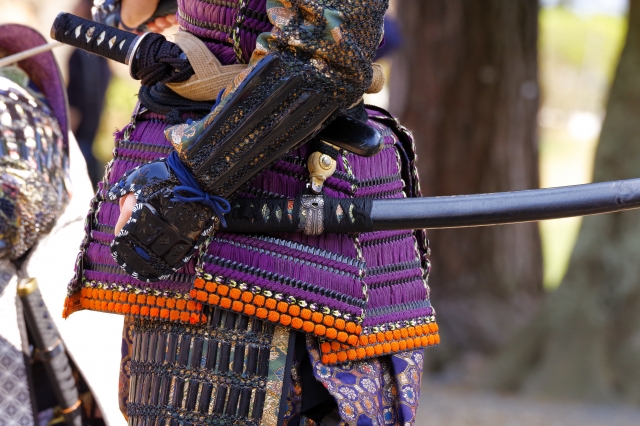
On the other hand, Suhada (swordsmanship) is a style that became common after the Edo period when the battlefield became less of a concern, and is often seen fighting with a straight back and quick footwork, similar to modern kendo. Some schools had already begun to use it during the Sengoku period, but it can also be said to be a swordsmanship that was optimized for sword fights in situations where it was commonplace not to wear armor.
Since the premise was that fighters would literally be in plain clothes, a direct hit with a sword on any part of the body would almost always be fatal, and it could be said that this is why more sophisticated sword techniques were required.
The swordsmanship of armored warriors, preserved in their structures and techniques
The Bokuden-ryu kata begins with an upright posture reminiscent of the latter bare-skinned swordsmanship and modern kendo, but some of the stances still strongly evoke the style of the kaisha swordsmanship era.
For example, in the "jodan no kamae" (upper stance), whereas in kendo the fist is raised directly above the head, in Bokuden-ryu the fist is raised slightly to the right of the forehead. This form is designed for those wearing a helmet, and originates from the fact that if there is an ornament such as a front crest, it is not possible to raise the fist directly above the forehead. Also noteworthy is the in-fighting technique of getting into the opponent's chest with a deep, crouching posture called "orimi" and attacking the back of the opponent's hand or throat with an upright sword.
One of the most famous secret techniques of the founder of the school, Tsukahara Bokuden, "One Strike." Although the specific stroke of the sword is kept secret, it has been speculated that it involves putting one's whole body and soul into a single blow.
As if to illustrate this, the Bokuden style of swordsmanship handed down through the Hirosaki domain is said to have its essence in a suicidal blow that is imbued with the spirit of breaking the armor itself, while dodging and pulling back to avoid the opponent's attacks.
In any case, Bokuden-ryu, which combines the fighting styles of both the armored warriors of the Sengoku period and the swordsmen of the Edo period, can be said to be an important intangible cultural asset in the history of the physical culture of martial arts.
Information
- Reference link: Japan Kobudo Association – Bokudenryu Swordsmanship
【Iwate Prefecture: Due to the overwhelming striking power, matches with other styles are banned! "Shosho-ryu Wa"
we will introduce "Shosho-ryu Wa," a school of martial arts that was passed down in the Morioka domain
The official name of the Shosho-ryu Wa "Kanze-teki Shinshoshoyogan Kitsune-den-ryu" (The True Kanze School of Shosho -ryu), and its distant ancestor is said to be Fujiwara no Kamatari. About 150 years after Kamatari, the Kitsune-den-ryu was in danger of being lost, and Sakanoue no Tamuramaro revived it, changing the name to "Kanze-ryu."
Later, at the beginning of the Kamakura period, the 27th successor of the Kanze school, Mori Uheita Kunitomo, showed great skill at a sumo match hosted by Minamoto no Yoritomo, and was praised by many feudal lords, who ordered the technique to be named "Shosho-ryu," which is said to be the origin of the school. Therefore, in our school, Mori Uheita is positioned as the 27th successor of the Kanze school and the first successor of the Shosho-ryu
Regardless of whether the legends that the founder of the original school was Fujiwara no Kamatari or that Sakanoue no Tamuramaro revived it are historical facts, it is common in old-style martial arts to link the origins of a school to ancient times or well-known people.
It is not clear when Shosho-ryu was first founded, but at least there are accounts of unarmed combat in the Age of the Gods in the Kojiki and Nihon Shoki, and the word "sumo" was first written during the reign of Emperor Yuryaku, so it is believed that unarmed fighting techniques have a very ancient history.
Sumo during the Middle Ages when Minamoto no Yoritomo lived is thought to have been different from today's professional sumo, and was more of a style closer to mixed martial arts, so it is easy to imagine that practitioners of historic martial arts such as Shosho-ryu were active.
Elbow strikes, sharp kicks, and powerful striking techniques
A distinctive feature of the Shosho-ryu style of martial arts is its extremely powerful striking techniques. It places particular emphasis on elbow strikes and foot strikes, as well as kicks, and also employs other powerful attacking techniques such as hand strikes and eye-gouging.
Shosho-ryu is known for the power of its foot attacks (kicking techniques), and it is rare even among old-style jujutsu to see a technique as sharp as a front kick in karate.
What is noteworthy about this foot guard is that it is not a type that you put your weight on, but rather a kick that transmits impact to the opponent by raising the heel of the supporting foot and emphasizing speed.
To master these foot-attack techniques, Shosho-ryu trainees to be able to kick a hanging hand towel so that it dents only the center, or kick the side of a barrel with its lid down in place without sending it flying backwards.In addition, in paired practice, students actually perform kicking movements using extremely thick, torso-like protective gear called a "nikura."
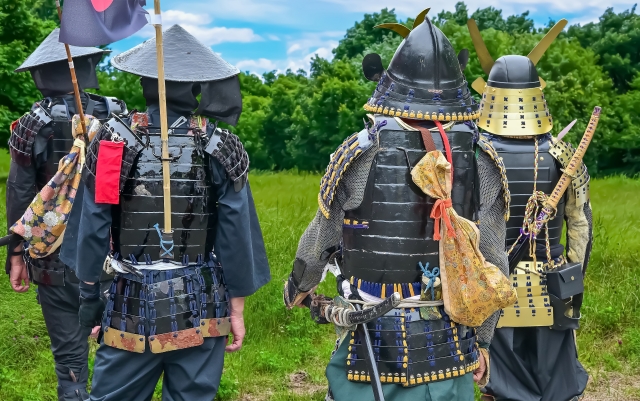
The striking technique that destroyed armor, demonstrated in front of the Emperor
The following story is passed down as an anecdote that demonstrates the power of the Shosho-ryu's striking techniques.
During the Tenpo era in the first half of the 19th century, under the reign of Nanbu Risato, the 12th lord of Morioka Domain, an armored fighting tournament was held, bringing together all the various schools within the domain. Matsuhashi Munenori , participated from the tournament, but when the Magistrate of Arms recommended that he choose his own armor for the tournament, he declined.
To demonstrate the reason, Munen tied the armor to a pillar and hammered elbow pads from the Shosho school into the torso. When the magistrate took the armor apart and examined it, he found that the bellows on the inside had been severely damaged by the impact of the elbow strike.
The most powerful weapon was the foot guard, but the lord of the domain considered it rude to use a kick in front of him, so he used his elbow instead. However, Nanbu Risato was so astonished by the power of the guard that he subsequently banned the Shosho-ryu from fighting with other schools, and designated it as a secret school that was not to be taken outside the domain.
It is said that the armor from this time survived until the beginning of the Taisho period, but has now been lost.
Shosho-ryu was introduced to the Morioka domain in the mid-Edo period, during the reign of the sixth feudal lord, Nanbu Toshiki. It was brought there by Oka Takebei, who was born into a medical family in Morioka and traveled around the country training as a warrior. He learned Shosho-ryu in Kamakura and became the 21st successor.
Since then, Shosho-ryu has been passed down in Morioka through the generations and was designated an intangible cultural property of Morioka City in 1979, with its historical techniques still being passed down by disciples today.
Information
- Reference link: Japan Kobudo Association – Shosho-ryu Wa




![[Yamagata and Akita Edition] Valuable ancient martial arts from the six Tohoku prefectures! What are the unique techniques still handed down today? Old-style martial arts (Yamagata and Akita edition)](https://jp.neft.asia/wp-content/uploads/2025/10/koryu03-150x150.jpg)
![[Tohoku Autumn Leaves Driving Map: Iwate Edition] 3 Recommended Driving Courses and Local Cuisine! Autumn leaves in Hachimantai](https://jp.neft.asia/wp-content/uploads/2024/10/25627275_m-150x150.jpg)
![[Towada City, Aomori Prefecture] An oasis of art that resonates with the future! Towada City Museum of Contemporary Art 26543782_m](https://jp.neft.asia/wp-content/uploads/2023/05/26543782_m-150x150.jpg)
![[Serialization: Following the narrow path in the back part 2] After arriving in Miyagi Prefecture, Basho and Sora aim for Sendai, the capital of forests. Oku no Hosomichi 2](https://jp.neft.asia/wp-content/uploads/2023/09/f05201ee29d975b84ec437a8b76f2b98-150x150.jpg)
![The development of Akita city began in Tsuchizaki - Tsuchizaki Minato at the mouth of the Omono River, which developed as a center of distribution [Akita Prefecture] 33192efe1595a3309d4e9325ae7a5621](https://jp.neft.asia/wp-content/uploads/2023/12/33192efe1595a3309d4e9325ae7a5621-150x150.jpg)

![Hachirogata, once the second largest lake in Japan [Akita Prefecture] Ogata Village | Hachirogata Reservoir Pond](https://jp.neft.asia/wp-content/uploads/2017/03/24094900_m-150x150.jpg)
